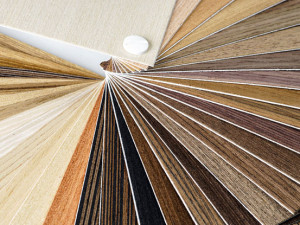
Installing a new timber floor is a long term investment and will last decades and even generations. However every 10 years or so they do begin to look a little dull and need to be re-sanded and finished. To get the most life out of your timber floors, follow these simple cleaning and care tips to help keep your floors looking beautiful for many years to come.
Cleaning Your Floors
Cleaning timber floors is easy and depending on the amount of foot traffic, should be done as often as possible. Ideally, you should give your floors a daily sweep with an electrostatic mop or a vacuum cleaner with a soft bristle head.
For more ingrained dirt and grime, clean your floors with a damp, well wrung mop using a pH neutral floor cleaner as per the manufacturer’s instructions. If your mop is too wet, the excess water can leech into the timber and cause it to expand and cup.
Never use common household detergents as some of them contain silicon or wax which will make re-coating very difficult and can also make your floor very slippery. Never use Methylated spirits or any other type of petroleum distillate as it will degrade the floor coating and make your floor look very dull.
Wipe up spills as soon as they occur with a dry cloth or paper towel. If the spill is sticky, wipe it up with a slightly moist cloth.
While steam mops are very popular floor cleaning appliances, they are not recommended for timber floors because the steam gets into the timber joints, cracks and scratches and can result in the timber expanding and cupping. Also, the extreme heat from the steam damages the floor coating.
Preventative Floor Care
When your floor is first installed or re-finished, it needs some time to ‘cure’. Basically this means the floor coating needs time to completely dry and harden. For optimal care and prevention, there are general waiting times before you can place your furniture and rugs on your new floor. For furniture, the waiting time is 48 hours from the last coat of varnish and for rugs and mats, the waiting time is at least 2 weeks. The reason for this is that if you place furniture and rugs on your floor before it is fully cured, they could dull and even leave permanent imprints on your floor.
Adhere protective pads like felt to the legs of your furniture to reduce the risk of scratching. Also, replace those pads every couple of years because the weight of the furniture thins out the pad and over time they collect ingrained dirt and pet fur which leads to scratching.
When you are moving furniture, make sure you lift it into place. If you drag your furniture around, you risk causing deep scratches that can only be repaired by floor sanding and re-finishing.
Place protective mats under furniture with castors such as chairs as the constant movement damages the floor. Barrel castors are recommended over ball castors.
In high traffic areas and doorways, cover the floors with mats and rugs as they help to maintain the quality of the floor and trap extra dirt and grit that is walked in and out of the house. Make sure you regularly vacuum and bang out excess dirt from your mats and rugs, especially around the edges where the most dirt is collected. Regularly sweep your high traffic areas to help keep dirt and grit to a minimum.
Periodically rotate your rugs around to help protect your floors from direct sunlight and other environmental factors. Over time all hardwood timber floors will change colour by fading, or darkening so when you rotate your rugs it helps to keep an even colour and tone throughout your home.
Changes in temperature and humidity can also damage your floor by either contracting and cracking in cold, dry climates or expanding and cupping in hot humid climates. The best prevention here is to maintain an even indoor temperature throughout the year.
Develop a household policy with your family and friends to leave their shoes at the front door. Shoes and especially high heeled shoes are possibly your timber floor’s worst enemy. The high sharp points and even flat shoes with hard heels leave dents in the timber. Also, your shoes walk in a lot or dirt and grit which leads to surface scratches. Fortunately the remedy is very simple – leave them at the front door and wear socks instead.
Pets are another hazard to timber floors with their long hard claws. These days, most of us love to have our pets indoors with us so in order to prevent them from scratching your floors, keep their claws regularly trimmed and filed so they are as blunt as possible.
Well, there you have it. By developing a few new house rules and a simple cleaning routine, your timber floors will look their best for many years to come.









